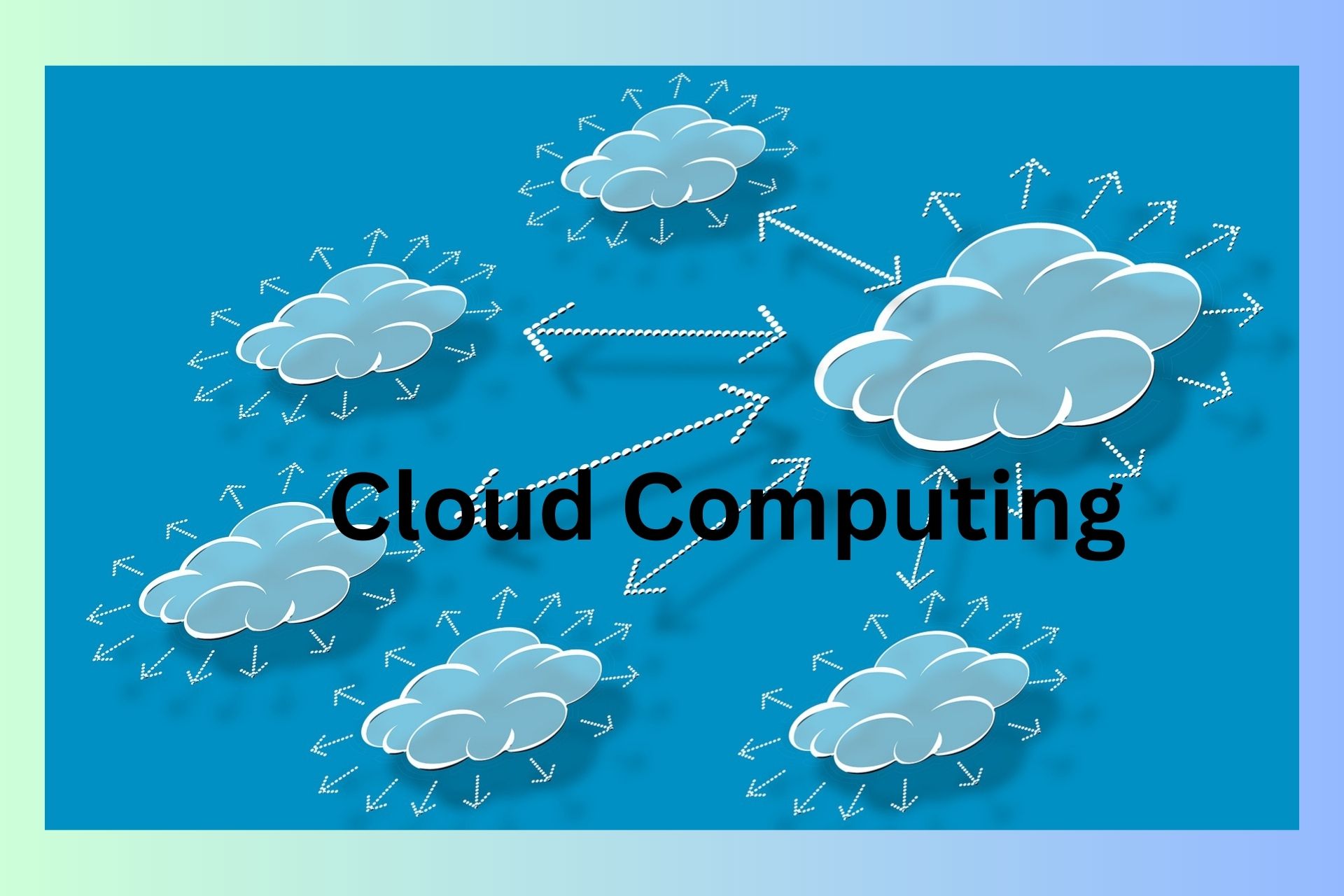Welcome to the world of cloud computing, where the possibilities are endless and the benefits are immense. In this comprehensive guide, we will take you on a journey to understanding the basics of cloud computing and its many advantages.
So, what exactly is cloud computing? It’s a revolutionary technology that allows you to store, manage, and access data and applications over the internet, rather than on your local computer or server. From small businesses to large enterprises, cloud computing has become an integral part of modern-day operations. But what sets it apart from traditional computing methods?
The answer lies in its flexibility, scalability, and cost-effectiveness. By leveraging the power of the cloud, organizations can achieve greater efficiency, improved collaboration, and enhanced data security.
Whether you’re a tech-savvy professional or a curious individual looking to expand your knowledge, this guide will equip you with the required information you need to navigate the world of cloud computing confidently. So, buckle up and get ready to unlock the true potential of the cloud!
Advantages of Cloud Computing

Cloud computing offers numerous advantages that have revolutionized the way businesses operate. One of the key advantages is its scalability. With cloud computing, businesses can easily scale their resources up or down based on their needs.
This flexibility allows organizations to quickly adapt to changing demands, optimize their operations, and avoid unnecessary expenses. Additionally, cloud computing enables seamless collaboration among team members, regardless of their physical location.
Through cloud-based tools and applications, individuals can work together on projects, share files, and communicate effectively. This not only enhances productivity but also promotes innovation and creativity within teams. Furthermore, cloud computing offers enhanced data security.
Cloud service providers invest heavily in security measures to protect their clients’ data from unauthorized access, data loss, and other potential threats. By leveraging the expertise and resources of these providers, businesses can ensure the confidentiality, integrity, and availability of their data.
In conclusion, the advantages of cloud computing, such as scalability, collaboration, and data security, make it a game-changer for organizations of all sizes.
Types of Cloud Computing Services
Cloud computing services can be categorized into three main types:
Infrastructure as a Service (IaaS):
IaaS provides the foundation for building and managing IT infrastructure in the cloud. It offers virtualized computing resources, such as virtual machines, storage, and networking capabilities, allowing businesses to have complete control over their infrastructure without the need for physical hardware.
Platform as a Service (PaaS):
PaaS, on the other hand, provides a platform for developers to build, deploy, and manage applications. With PaaS, developers can focus on coding and innovation, while the underlying infrastructure and maintenance tasks are taken care of by the cloud provider.
Software as a Service (SaaS):
SaaS delivers software applications over the internet on a subscription basis. Users can access these applications through a web browser, eliminating the need for installation and maintenance. Popular examples of SaaS include customer relationship management (CRM) systems, project management tools, and email services. Each type of cloud computing service offers unique benefits and is suitable for different use cases. Organizations can choose the service that best aligns with their requirements and goals.
Public vs. Private vs. Hybrid Cloud
When it comes to deploying cloud computing services, organizations have three main options: public cloud, private cloud, and hybrid cloud. The public cloud refers to services that are provided by third-party vendors and made available to the public over the Internet. These services are shared among multiple users, offering cost savings and scalability.
A private cloud, on the other hand, is dedicated to a single organization and can be hosted on-premises or by a third-party provider. The private cloud offers greater control, customization, and security, making it ideal for businesses with strict compliance requirements.
A hybrid cloud combines the best of both worlds by integrating public and private cloud environments. Organizations can leverage the scalability and cost-effectiveness of the public cloud while keeping sensitive data and critical applications in a private cloud.
A hybrid cloud provides flexibility, allowing organizations to optimize their resources and choose the most suitable environment for each workload. The choice between public, private, and hybrid cloud depends on factors such as data sensitivity, compliance requirements, budget, and performance needs.
Common Cloud Computing Use Cases
Cloud computing has transformed various industries and enabled new use cases that were previously unimaginable. One common use case is data storage and backup. Organizations can leverage cloud storage services to securely store and retrieve large amounts of data, eliminating the need for physical storage devices and reducing the risk of data loss.
Another popular use case is software development and testing. Cloud platforms provide developers with the necessary tools, resources, and infrastructure to develop, test, and deploy applications efficiently. This eliminates the need for costly hardware and speeds up the development process.
Additionally, cloud computing has revolutionized the way businesses handle customer relationship management (CRM). Cloud-based CRM systems enable organizations to manage customer interactions, track sales activities, and analyze customer data in real time.
This improves customer service, increases sales productivity, and drives business growth. Other notable use cases include virtual desktop infrastructure (VDI), big data analytics, artificial intelligence (AI), and Internet of Things (IoT) applications. Cloud computing offers endless possibilities for organizations to innovate, streamline operations, and deliver value to their customers.

Cloud Computing Security Considerations
While cloud computing offers enhanced data security, it also introduces new security considerations that organizations must address. One of the primary concerns is data privacy and compliance.
Organizations need to ensure that their data is stored and processed in compliance with applicable regulations, such as the General Data Protection Regulation (GDPR) and the Health Insurance Portability and Accountability Act (HIPAA). Cloud service providers typically offer data encryption, access controls, and auditing mechanisms to help organizations meet these requirements.
Another security consideration is the risk of data breaches and unauthorized access. Organizations should implement strong authentication mechanisms, such as multi-factor authentication, to protect their cloud accounts and resources.
Regular security assessments, vulnerability scanning, and intrusion detection systems are also important to identify and mitigate potential security risks.
Additionally, organizations should have a robust incident response plan in place to handle security incidents effectively and minimize the impact on their operations.
By addressing these security considerations proactively, organizations can confidently embrace cloud computing while maintaining the privacy and security of their data.
How to Choose a Cloud Computing Provider
Choosing the right cloud computing provider is crucial for the success of your cloud initiatives. When evaluating providers, there are several factors to consider. First and foremost, you should assess the provider’s reliability and availability.
Look for providers that offer high uptime guarantees and have a track record of delivering reliable services. Scalability is another important factor to consider. Ensure that the provider can accommodate your organization’s growth and scale resources as needed.
Security should be a top priority when selecting a provider. Evaluate their security measures, certifications, and compliance with industry standards. It’s also important to consider the provider’s pricing model and cost structure.
Look for transparency in pricing, flexibility in plans, and the ability to optimize costs based on your usage patterns. Lastly, consider the provider’s level of customer support. Look for providers that offer responsive support, 24/7 availability, and a dedicated account manager.
By carefully evaluating these factors, you can choose a cloud computing provider that aligns with your organization’s requirements and sets you up for success.
Cloud Computing Cost Optimization Strategies

While cloud computing offers cost savings compared to traditional IT infrastructure, it’s important to optimize costs to maximize the benefits. One cost optimization strategy is right-sizing resources. By analyzing your workload requirements and choosing appropriately sized instances, you can avoid overprovisioning and reduce costs.
Utilizing reserved instances or spot instances can also lead to significant cost savings. Reserved instances offer discounted pricing for committed usage, while spot instances allow you to bid for unused capacity at lower prices.
Another strategy is leveraging serverless computing. With serverless architectures, you only pay for the actual execution time of your applications, eliminating the need to provision and manage servers. Additionally, implementing automated resource management and monitoring tools can help identify idle resources, optimize usage, and reduce costs.
Cloud providers often offer cost management tools that provide insights into your usage patterns and recommendations for cost optimization. Regularly reviewing and optimizing your cloud infrastructure can lead to significant cost reductions and ensure that you are getting the most value out of your cloud investments.
Cloud Computing Trends and Future Developments
Cloud computing continues to evolve rapidly, and keeping up with the latest trends is essential for organizations to stay competitive. One of the notable trends is the rise of edge computing. Edge computing brings computing resources closer to the edge of the network, enabling real-time data processing and reducing latency.
This is particularly important for applications that require low latency, such as autonomous vehicles and industrial IoT. Another trend is the increased adoption of serverless computing. Serverless architectures allow developers to focus on building applications without worrying about infrastructure management.
This trend is expected to continue as more organizations embrace the benefits of serverless computing, such as reduced costs and increased agility. Additionally, hybrid cloud deployments are becoming more prevalent as organizations seek to balance the benefits of public and private clouds.
The integration of artificial intelligence (AI) and machine learning (ML) into cloud services is also a significant trend. Cloud providers are incorporating AI and ML capabilities into their offerings, enabling organizations to leverage these technologies without the need for specialized expertise.
As technology advances, we can expect further innovations and advancements in the cloud computing space, empowering organizations to drive digital transformation and achieve their business goals.
Conclusion
Cloud computing has revolutionized the way businesses operate, offering flexibility, scalability, and cost-effectiveness. From small startups to large enterprises, organizations of all sizes can benefit from the power of the cloud.
By leveraging cloud computing services, businesses can achieve greater efficiency, improved collaboration, and enhanced data security. Understanding the basics of cloud computing and its advantages is essential for anyone looking to navigate the world of modern technology.
In this comprehensive guide, we have covered the advantages of cloud computing, the types of cloud computing services, the different deployment models, common use cases, security considerations, choosing a provider, cost optimization strategies, and future trends.


